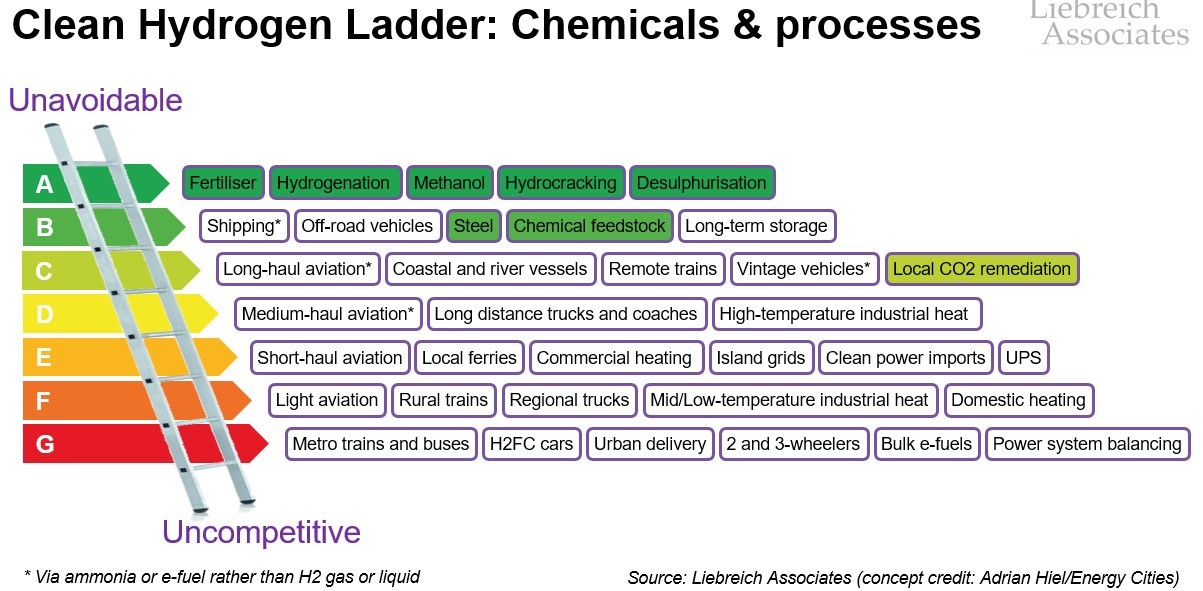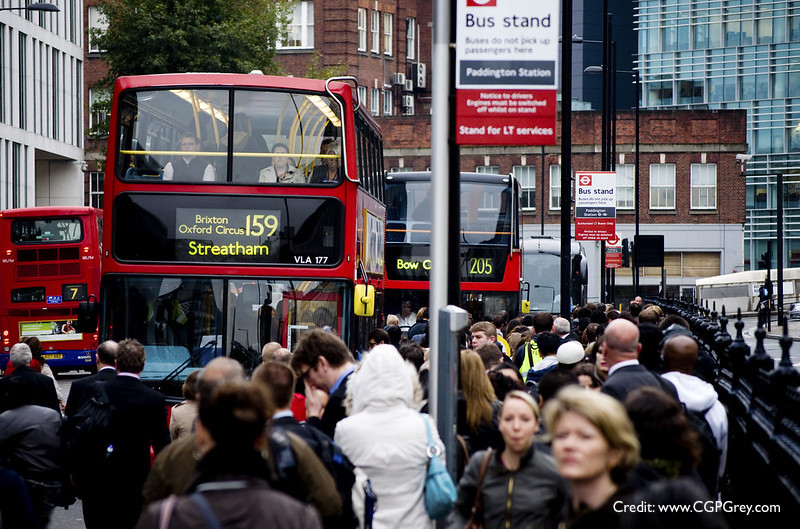Conservative Home: Nowhere is the innovation backlog facing London as stark as in the transport system (Pt 4)
Michael Liebreich is an entrepreneur, expert on clean energy and transport, member of the Board of Trade, former member of the board of Transport for London, and an Olympic skier. This is the final part of a series in which he explains what it would take for a Conservative candidate to win an unexpected victory in the 2024 London Mayoral race.
In this final instalment, we’ll look at transport.
The great transport reset
The primary reason people live in cities is to interact with each other, quickly and frictionlessly. For this, the transport system simply has to work. Right now, it doesn’t. And nowhere is the innovation backlog facing London as stark as it is in the area of transport.
Twenty years ago, there were 40,000 minicabs in London, operating from fixed offices; by 2019, on the eve of the pandemic, that figure had increased to 95,000, cruising the streets causing pollution, congestion and friction. Twenty years ago, there were 6,500 London buses – today there are just under 9,000; ridership peaked in 2014. Twenty years ago, Waze and Google did not exist pushing drivers into rat-runs through residential streets. Twenty years ago, there were no home deliveries; today our streets are back-to-back delivery vans, double-parked and blocking other road users.
Forget Khan’s fake consultation last year over eliminating bus routes – that was just political theatre in support of his demands for another TfL bailout by Government. What is needed is a rethink of all aspects of London’s surface transport, to get it the city into shape for the next 30 years.
The idea that buses are the transport of the working classes and should be prioritised over all other transport modes needs to be called out for the canard it is. London’s bus routes need to be restructured around bringing people into and out of Central London or between outer zones, not criss-crossing central London and roaming empty up and down Oxford street (which of course should at last be pedestrianised). Today’s technology allows matching of bus capacity and demand – there is no longer any excuse to run empty buses.
London’s shopping and commercial heart, Zone 1, should be served by a network of accessible, autonomous electric shuttles – technology that exists today – supplemented by black cabs and delivery vehicles. If London is to retain its iconic black cabs for the long term, the service they provide needs to be clearly differentiated from that delivered by private hire vehicles. As it is, they are over-regulated and the vehicles far too costly.
The Conservative Mayoral candidate needs to avoid getting sucked into the Low Traffic Neighbourhood and cycling culture wars. These may be great at whipping up a narrow segment of the Conservative base, but that won’t deliver a Mayoral majority, as we have seen. The next Mayor needs to negotiate a peace deal between those who value the freedom to drive and those who value freedom to enjoy their local streets. Where there are trade-offs, most weight must be given to the needs of locals, not rat-runners, and to access and safety, not convenience.
As for cycling, all of us walk but only a minority cycle. Why is it that walking in London can be so unpleasant, yet we endlessly discuss cycling? The next Mayor should be the Walking Mayor.
Software will eat congestion
Another canard that needs to be called out is the idea that London’s biggest transport problem is its limited area and street layout. Digital technology allows road space to be smartly allocated. London, a pioneer in congestion charging, should of course be a pioneer in dynamic road pricing – to manage congestion and allocate space between different road users at different times of day.
London’s curb space also needs to be dynamically managed. A thought experiment: imagine you were to wake up in a city suddenly devoid of parked cars. What will you do with the two extra lanes freed up on either side of each street? Bus and cycle lanes? Filter lanes to improve traffic flows? Street cafes? Charging stations? Drop-off bays for home deliveries? More ranks for taxis and minicabs? Public toilets? Pocket parks and playgrounds? Car club parking? One thing is for sure: there is no way you would hand over all that space to London’s car owners to store their expensive, under-utilised vehicles, however loudly they protested.
Dynamic road and curb pricing offers the promise of improving London’s safety and liveability, while at the same time raising funds in a way that aligns City Hall and councils’ incentives with the need to keeping traffic moving. But it needs to be done in a fair and transparent way, unlike Khan’s ULEZ extension.
Show us the money
The next Mayor has to stop running cap-in-hand to Government for transport funding, except for projects of national significance like Crossrail 2. Khan will be leaving the next Mayor a deal that commits London to a decade of transport austerity – negotiated with the Department for Transport by his here-now-gone-tomorrow Transport Commissioner, Andy Byford. The only way to escape its strictures is to cut costs at TfL and find new sources of income.
During my six years on the board of TfL, coming from the world of private business, I was astonished by the bureaucracy. I have never seen such volumes of paperwork produced by so many and read by so few. Despite repeated ‘cost-saving’ programmes, TfL today has 600 managers earning over £100,000 per year. Its debt was soaring year after year even before Covid hit. Money can be saved, and lots of it.
On the income side, it’s about pushing TfL’s commercial activities much harder. Surplus land should be moved into a separate unit, a chunk of it sold both to realize funds and to bring in talent and investment. The resulting joint venture should then be commercially managed to throw off cash every year to TfL. Much more third-party funding – from councils, businesses and, where appropriate, crowdfunding – must be brought in to cover the costs of all the things expected of TfL that don’t bring in revenues. There are opportunities to extract far more value from TfL’s estate beyond advertising, from sectors like telecoms, energy and hospitality.
London’s transport system has ground to a halt. A Conservative offer for London has to show a clear path to sorting it out, preparing TfL for the coming decades, and funding it.
Of course, all this begs one final question. Who will the Conservative Mayoral candidate be? Above all, it needs to be someone who can convincingly communicate the overall positioning I have laid out here: to address the sense of chaos and drift that hangs over London, while at the same time dealing with Khan’s policy backlog and delivering the innovation needed to prepare our great city for the future.
Terms of use: photos and other media may be used exclusively for the purpose of publicising an upcoming or past event involving Michael Liebreich, or to illustrate an article written by him. Their use must be accompanied by a clear indication of copyright in the following form:
© Liebreich Associates/name of photographer. Photos or other media downloaded in this way remain the property of Liebreich Associates Ltd. Any infringement of these terms of use may result in legal action by Liebreich Associates Ltd or by the respective photographer or rights holder.





